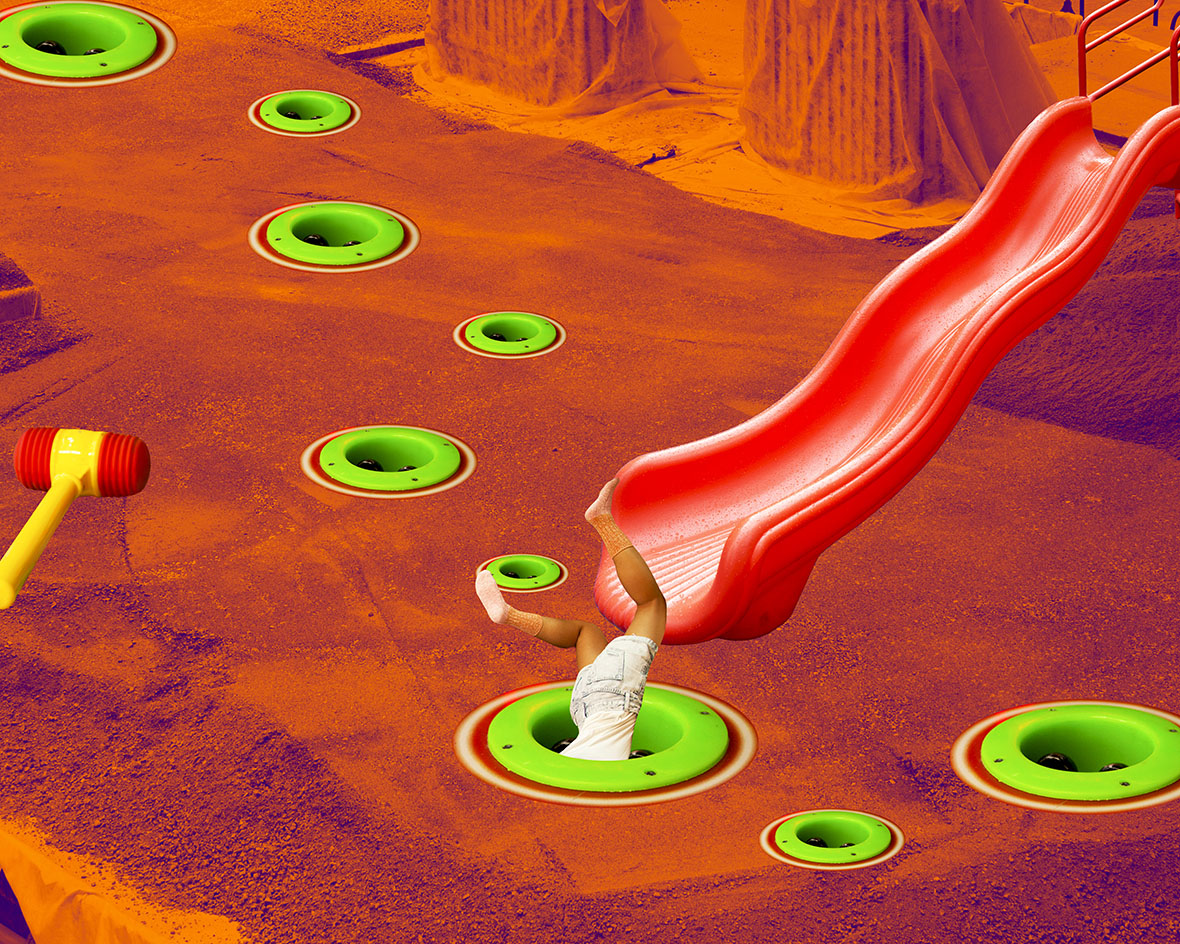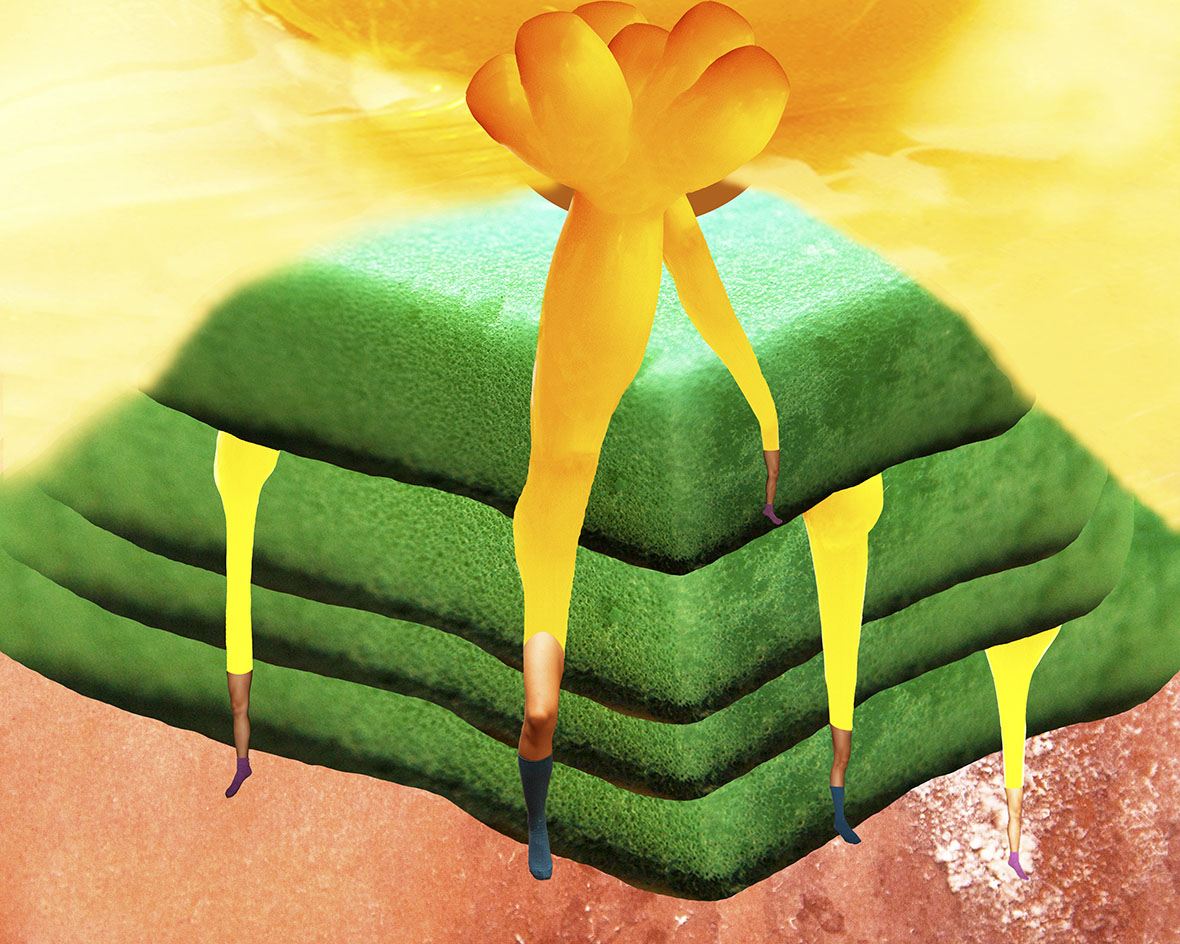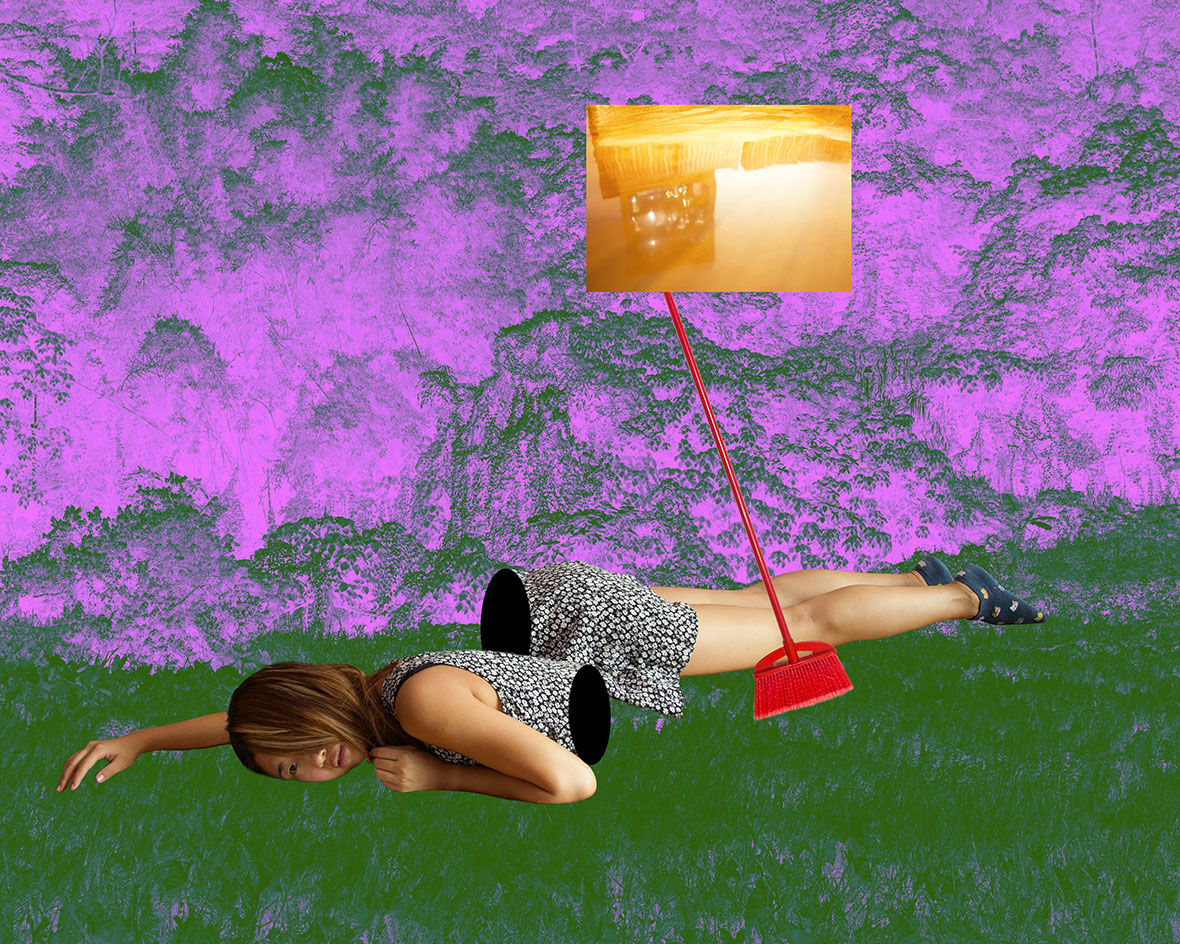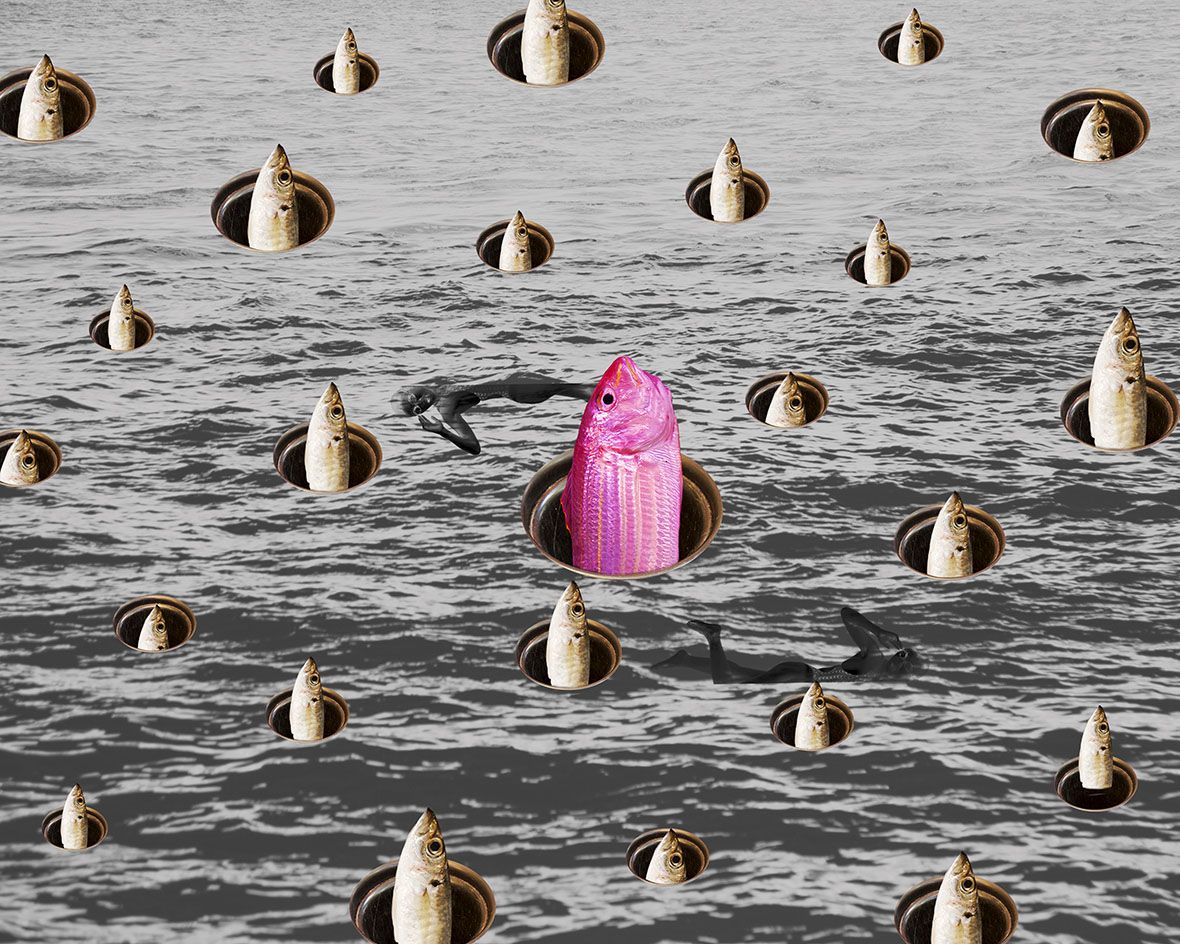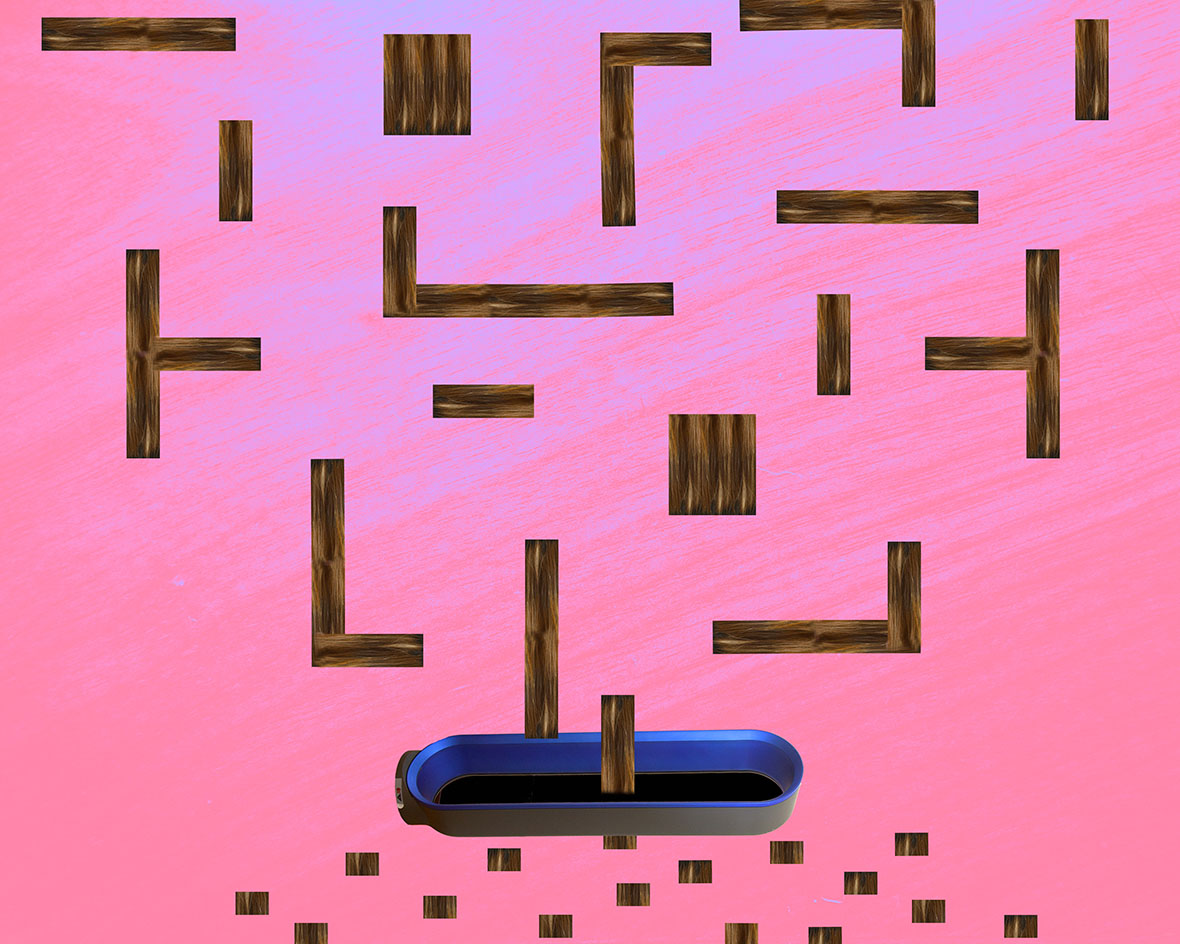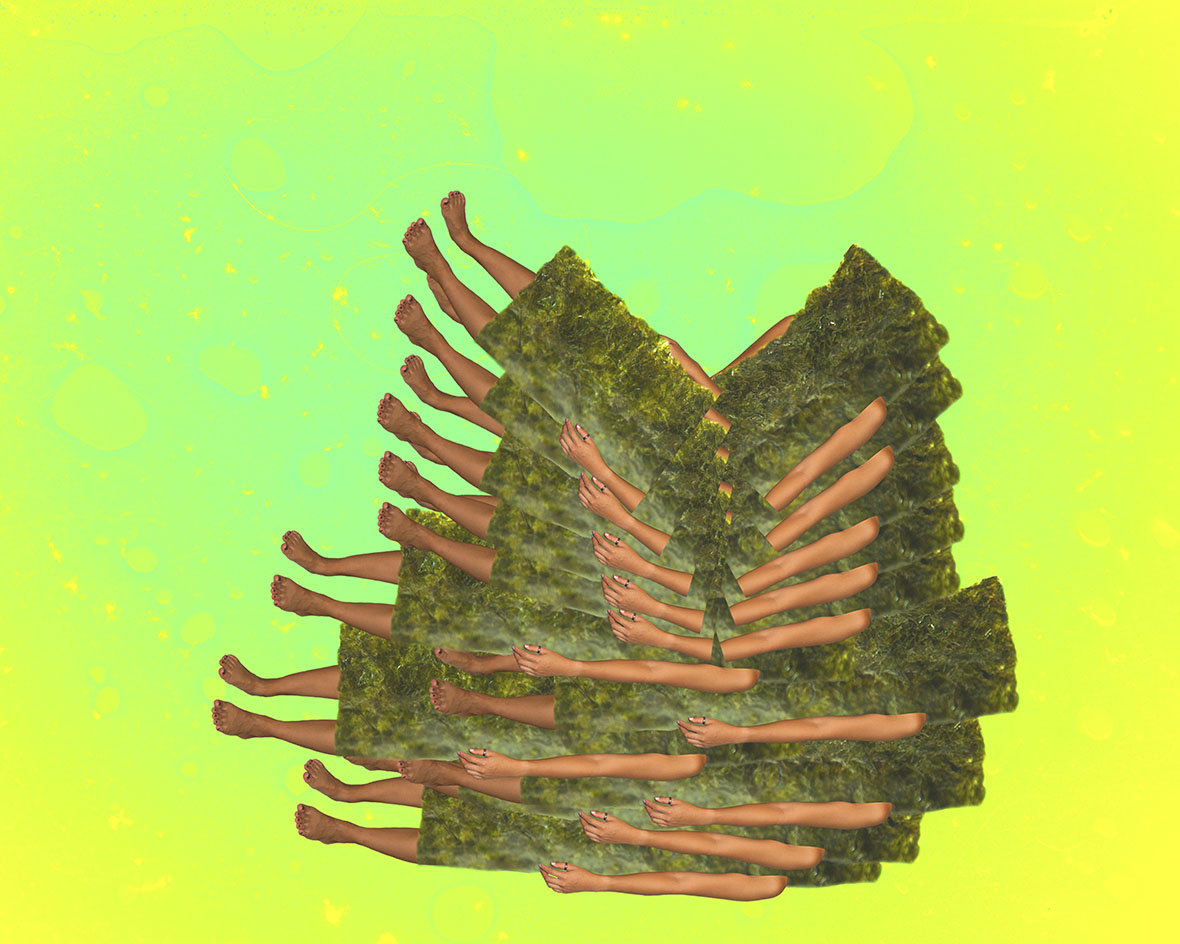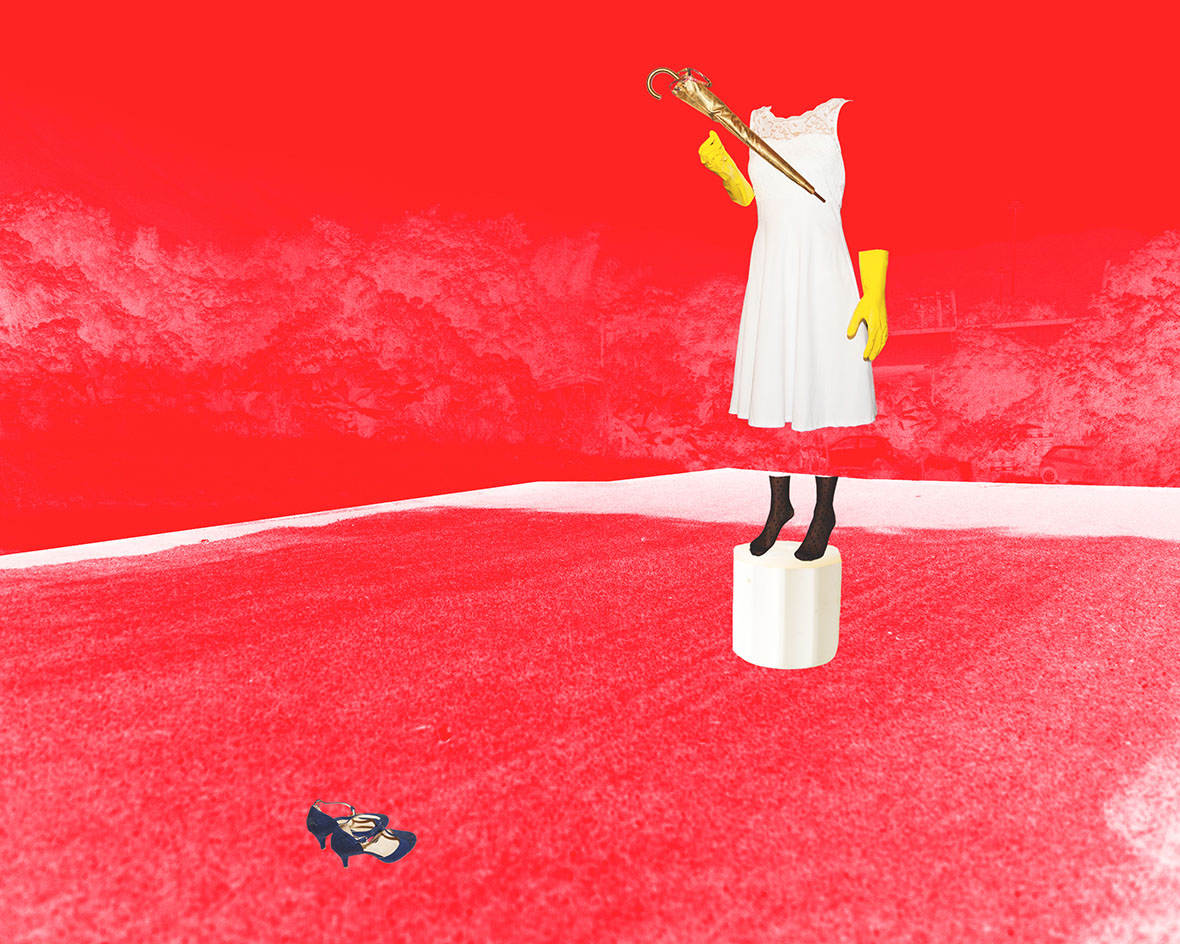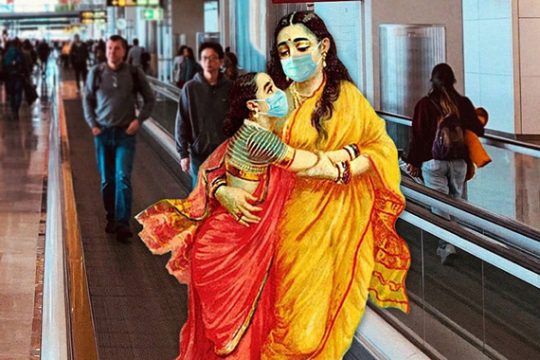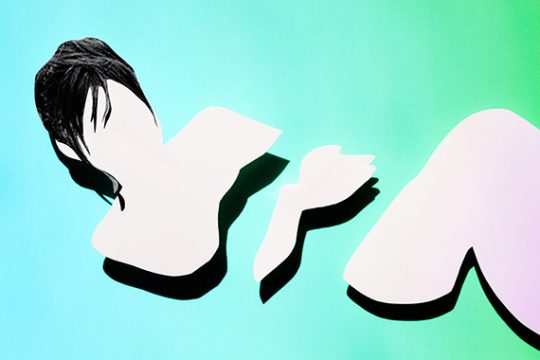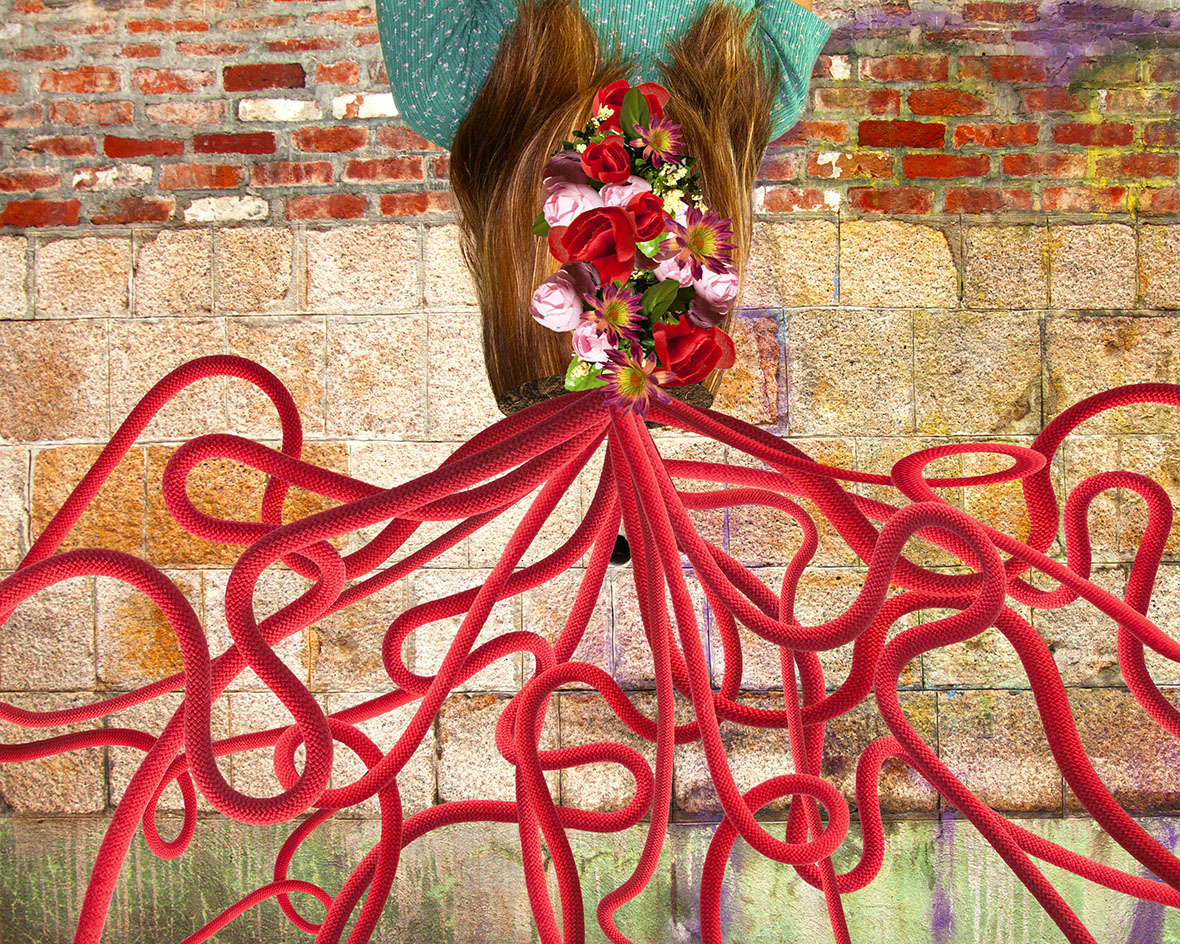
“Being raised in Hong Kong, I felt a bit detached from my roots to the mainland,” says artist Hung Chingyan. “This grappling with identity is one of the most important elements of my creative process.”
As a second-generation immigrant from Fujian, Hung often felt different from her peers in Hong Kong. Unlike born-and-raised Hong Kongers, her earlier educational background was far more traditional and conservative. Social constructs such as filial piety and gender roles were deeply ingrained into her psyche. She felt estranged once she arrived in Hong Kong, where the education system was more influenced by the British. “I felt different from others, and it didn’t feel like I belonged in Hong Kong,” she says.
Only years later did she realize that these feelings of otherness were of no fault of her own and how pointless it was to dwell on these memories. Coming to terms with the absurdity of it all proved to be the perfect creative fodder. Her collage series The Song of a Young Nutter takes these realizations and stirs in an extra dollop of quirkiness to bring her childhood experiences into a visual form. This project uses Hung’s original photos, which include shots of keepsakes from her childhood, random objects that have caught her eye, and even herself. Together, this mishmash of disparate images has become her way of revisiting the experiences that have shaped who she is today.
“作为一个土生土长的香港人,我好像已经忘掉自己的根在中国,这一切有关探讨身份的寻索也是我创作中重要的故事元素。”洪澄欣说道。她是在香港长大的福建第二代移民,和当地多元开放文化下生长起来的孩子不同,她坦言自己所受到的教育是相对传统而保守的,比如小辈要遵从“孝悌忠信”,比如女子要“秀外慧中”,也有些习俗和礼仪和香港等本土文化有着很大差异。“所以从小我就有一种与别人不同的感觉,亦觉得自己对香港这地没很大的归属感。”直到多年后,她才发现那种不同是基于“根”的不同。洪澄欣把儿时的有关经历称为“荒唐的记忆”。
于是,她决定用艺术创作的方式来表达自我感受,“用幽默的方式来表达我过去大人眼中的怪异”——《The Song of a Young Nutter》就得以诞生。这是一系列摄影拼贴作品,自画像、童年记忆中的物件和与过往的荒谬经历交互组合,以挖掘更深层的文化意义。
Piecing together different images to speak on specific topics in a cohesive way is always a challenge for Hung. “When I take photos, I like looking inwards,” she says. “I like to find inspiration at home, taking photos of objects I find laying around. It’s interesting to observe their little manmade scratches and examine the condition of the item. During the worst days of the pandemic, I was forced to look even closer within my limited surrounding for inspiration. This taught me that inspiration could be found anywhere.”
She eventually had the idea to include herself within her collages. This was a new creative stepping one, one that allowed for a deeper connection between her and the memory or subject she sought to explore.
最开始试图拼贴的时候总是最麻烦的,不同内容不同主题的物件,很难被同时放在一个空间里去讲述。“在找摄影题材的时候很喜欢‘往内看’,我会喜欢在家中找物件作为我的摄影对象,并观察他们的状态和痕迹。我记得一开始创作时遇上新冠肺炎爆发的高峰期,所有人都需要留在家里,我也不例外,所以更加多了空间去构思如何好好利用家中的物品配合我的创作。”洪澄欣试过几次合并素材之后,她开始拍摄自己的身体,并将“自己”放到拼贴里去与其他物件互动,以此产生一种有趣且怪诞的效果。
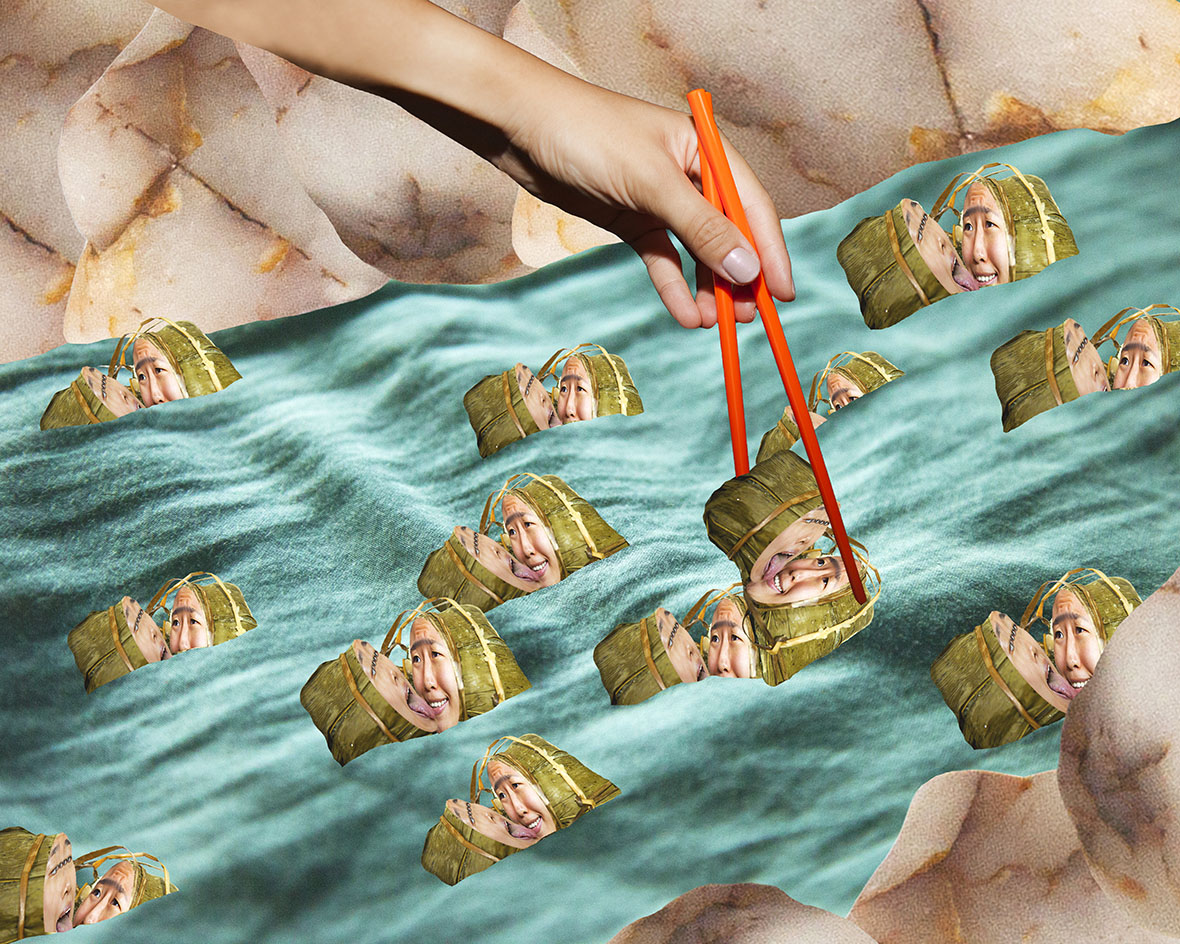
In the collage, Dad Loves Eating Sticky Rice Dumplings Wrapped With Rocks, she looks back on a Dragon Boat Festival that she spent with her grandma. The night before the holiday, Hung was helping her grandma wrap zongzi when a mischievous idea struck—she thought it’d be a funny prank to stuff one with rocks and trick her dad into eating it. Grabbing pebbles from a potted plant, she plucked two into the zongzi she was wrapping. In this artwork, the zongzi floating downriver have all been split open, revealing Hung’s face within, grinning impishly. The flowing river represents the holiday season, a not-so-subtle nod to the dragon boat races held during the celebrations.
This blending of unlikely elements is one of the most prominent themes in her work—even the loosest of threads can be woven into something new. Hung isn’t interested in quieting her ideas, no matter how strange or nonsensical it may seem. She’s simply interested in bringing her imagination into the real world.
比如在《Dad Loves Eating Sticky Rice Dumplings Wrapped With Rocks》这张作品里,她是回忆起有一年的端午节前夕,在家里帮阿嬷一起包粽子,突然之间灵机一动,把两颗放在花盘里的石头包在其中两只体形较小的粽子内,想来捉弄下晚归的爸爸。于是在作品里,粽子对半切开展示的是她自己坏笑的表情,而粽子顺流而下的石绿色背景则隐喻着古老的端午节必备传统:河道划龙舟。
这种天马行空的想象力串联,在洪澄欣的作品中并不少见,她没毫不掩饰自己的想法,并刻意把一些“无厘头”的意见放到拼贴当中,“希望呈现一种自我感觉最原始、自然的创作风格”。
Color and shape are the most deliberated aspects of Hung’s art, and like the memories they’re based on, they’re often scaled to exaggerated proportions. “My parents wanted me to eat some fish, so they mixed it into my congee and I got a fishbone stuck in my throat,” she recalls. “They were terrified, and they took me to the clinic downstairs to get the bone out. From there onwards, I’ve been terrified of eating fish. It feels dangerous.”
This childhood fear is the basis of Fish is a Terrible Creature, a collage featuring fish popping out from a black-and-white sea surface, as if ready to ambush.
在洪澄欣的创作里,颜色和物件的形态是画面最重要的元素,在这个系列中,她刻意把这两个元素放大,尝试玩弄一些花样,以致画面的完整度可以提高。“我还记得小时候有一次我的家人把鱼肉拆在我晚饭的白粥里,混在一起喂我吃,我却不小心把一条很粗的鱼骨吃进口里并卡在喉咙中。家人当时很害怕,马上把我送到楼下的诊所请医生帮我把鱼骨拔出来,那次以后,我便对吃鱼产生一种恐惧感,觉得吃鱼是一种很危险的行为。”洪澄欣说道,这就是《Fish is a terrible creature》的来源,她配以阴沉沉的背景色,象征着陷阱的“鱼洞”,来传递自己自小对吃鱼的恐惧感。
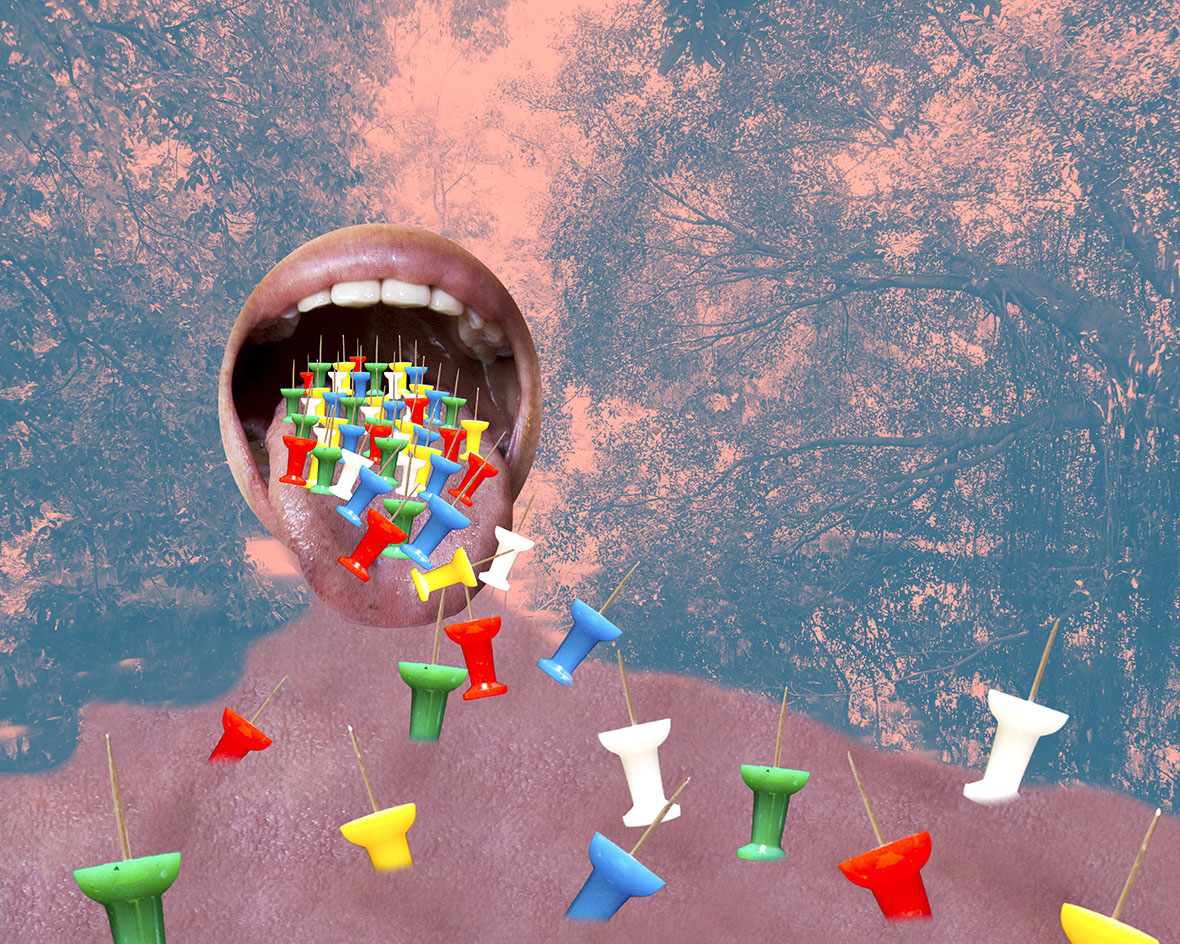
Other sights and sounds that only exist in her memory also make appearances throughout the series. “Like the slide at my playground, which I played on every day after school,” she says. “Or the woods that I hung out in, where I could hear my neighbor sweeping the leaves.”
This visual reassembly of her childhood may seem nonsensical to the average viewer, but to Hong, they hold plenty of meaning. When revisiting the old diary entries she uses for inspiration, she often finds herself teary-eyed or roaring with laughter. Reconstructing these childhood memories has helped her reflect on her place in the world, whether it be within her family or within society at large. “I think families are an interesting topic, and it’s one near and dear to my heart,” she says. “My family are the people I’m closest to, yet it feels like there’s a lot I don’t know about them sometimes. My art is pretty self-deprecating in that way. I’m poking fun at how I just can’t quite fit in anywhere.”
在这个系列的拼贴工具,就是洪澄欣不断翻找记忆中曾经看过、用过或玩过的物件。“就像游乐场里的滑梯,它是我以前每天放学后回家前必玩的游乐设施;树林背景的一幕,就是我小时候在家中听到楼下邻居打扫声音的时候,对身处环境的联想……”虽然说有些物件可能早已散失,但是洪澄欣也不断从那些回忆里再次联想,使之关联成为最后的成品。
她笑说,有时候看到某些有特别意义的物件时,偶然会留下一两滴眼泪,看到一些以前自己写的日记也会大笑一番,好似有种心灵互动。可以说整个创作的过程,是洪澄欣在不断通过拼贴重构自己的童年回忆,也在不断反思自己对于家庭和社会的意义。“我认为家庭是一个很有趣的探讨议题,因为它是离我最近、最亲切却最陌生的一个群体。”洪澄欣说道。
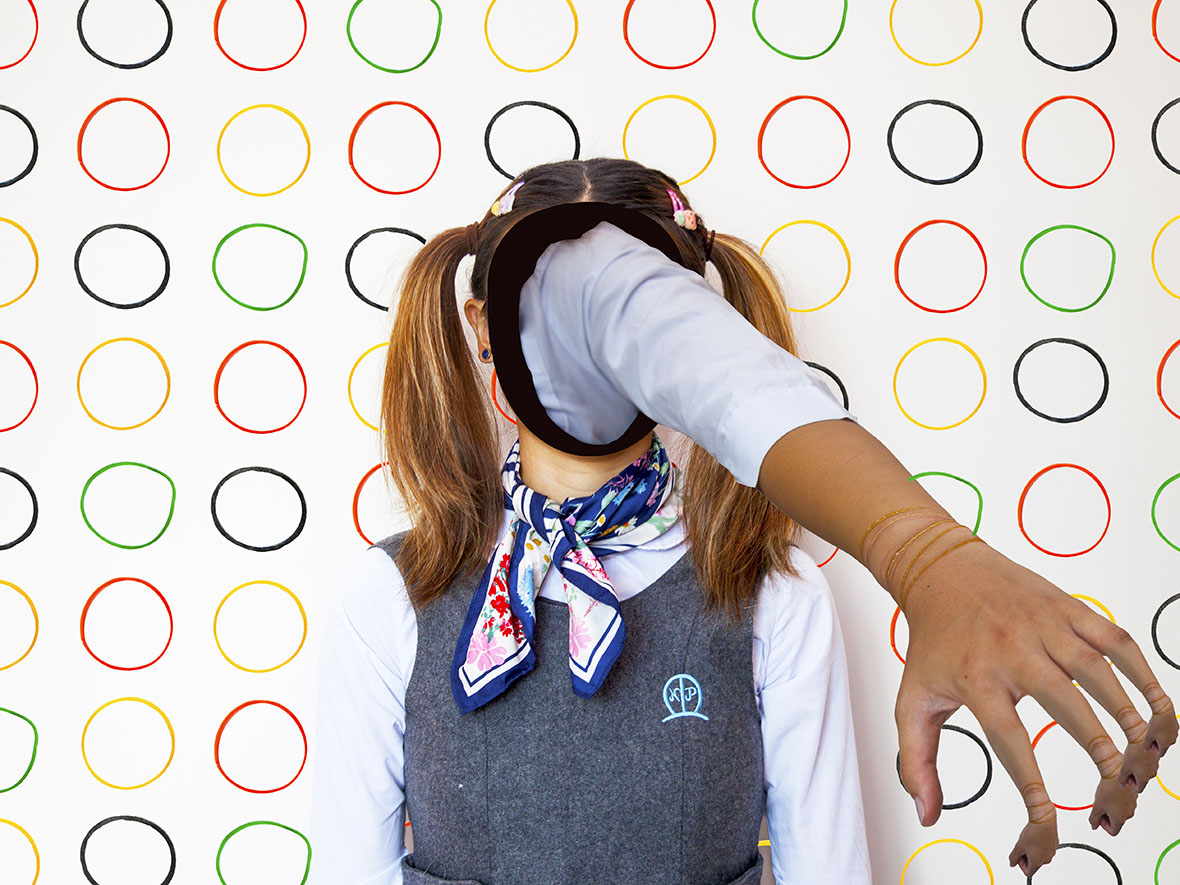
Like our stories? Follow us on Facebook and Instagram.
网站: www.hungchingyan.com
Instagram: @fotolotof
Contributor: Chen Yuan

